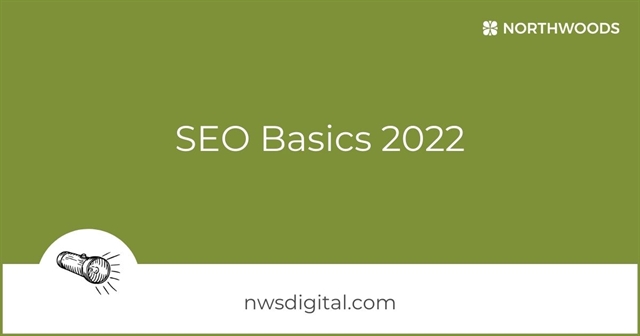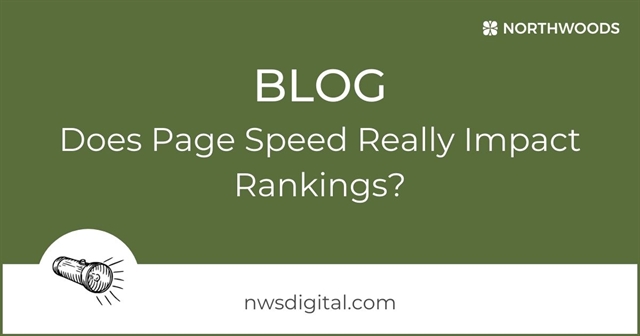By Northwoods Team
January 24, 2022
7 Minute Read
Updated: January 24, 2022
Originally Published: Sept. 1, 2020
There are many do’s and don’ts when it comes to SEO and how Google ranks websites. SEO myths and misunderstandings are abundant in the digital marketing world, which isn’t surprising given the speed at which things change. That’s why we want to ensure that you have the latest SEO facts!
The truth is that some ranking factors no longer matter because of Google’s ever-changing algorithms. So, let’s look at which ranking factors you should pay attention to in 2022 and which ones you should leave behind.
Top Google Ranking Myths
Understanding Google ranking myths will help you accurately improve your SEO performance, increase your organic traffic, and improve your website rankings. Here are the most common SEO misconceptions:
Myth #1: Keyword Targeting is Irrelevant
Truth: Keywords still matter! Just not in the same way they once did. Keywords are still showing on search engine results pages (SERPs), and every Google algorithm update is intended to further hone in on search intent. You should still include keywords in your content, but any efforts by content marketers and bloggers to hit a certain keyword ratio became obsolete with Google’s Hummingbird update.
So, keyword ratios are out, but a focus on creating content based on search intent – knowing the motivation behind why particular keywords are being searched – and naturally incorporating relevant keywords in your copy is critical.
Myth #2: Meta Tag Keywords Don’t Matter
Truth: Meta tags are no longer a google ranking factor. Meta tags have been used in HTML documents to provide structured metadata about a website and appear between the opening and closing <head> tags on a page. The three elements of metatags are:
- Title tag
- Meta description
- Meta keywords or phrases
Google doesn’t use the keyword meta tag for ranking purposes; however, meta tag keywords are still relevant as they indicate to Google what your content is about. Meta tags can also make your search results more appealing, which attracts more clicks from searches.
Myth #3: Target Keywords in Anchor Text Don’t Matter
Truth: Anchor text matters in SEO. Anchor text is the clickable text in a hyperlink that takes a user to a different webpage on your site or to an external domain, which is known as link building. Link building has become a crucial part of SEO strategies; however, there is debate in the content marketing community about whether you should use keywords in your anchor text.
The main reason why content marketers debate the value of keywords in anchor text is that over-optimization is penalized by Google. Keyword stuffing is seen as a red flag, which negatively impacts site rankings. To say keyword-rich anchor text doesn’t help your site isn’t accurate because anchor text helps Google understand page content and helps determine relevancy when it comes to link building.
So, instead of avoiding keyword rich anchor texts, use it wisely and naturally to avoid any penalties.
Myth #4: Link Building Doesn't Matter
Truth: Link building is important because it's how Google ranks web pages. Google essentially takes all the websites that link to you as a popularity vote. Google also takes other things into consideration, such as the linking website’s domain authority. If there are spam sites linking to you, your rankings and domain authority will drop. So it's important to make sure you build your link profile naturally. It's all about quality over quantity.
Why the change? In the past, webmasters and SEO pros started to take advantage of link building by creating chunks of links that had no valuable content just to improve rankings. As Google caught on and its focus changed to search intent in order to serve up better content to its users, having relevant, trustworthy, and authoritative links became the name of the game.
Myth #5: Too Many Keywords Will Result in Poor Organic Rankings
Truth: SEO experts and bloggers are always asking themselves how many keywords are considered too many and if Google will penalize a website for overoptimizing. The simple answer is that as long as your keywords are used naturally and your content is helpful, the number of keywords you have doesn’t really matter.
The key to avoiding overoptimization is to make sure you include a variety of keywords in your content, including:
- Branded keywords
- Product keywords
- Long-tail keywords
- Short-tail keywords
- Market-defining keywords
- Customer-defining keywords
- Latent semantic indexing (LSI)
- Geo-targeting
The bottom line? Focus on creating natural and helpful content for your website visitors instead of counting keywords.
Myth #6: Social Doesn’t Impact SEO
Truth: While it’s true that a “like” or comment on a social post doesn’t directly influence your Google rankings, they do have a positive impact on shares and engagement.
And shares and engagement create social signals, which can have significant SEO value. Sharing on Facebook, Instagram, Twitter, LinkedIn, and other social channels has been shown to increase social impressions and organic click-through-rates (CTR). Check out this social media study on SEO influence for more information.
If you’re successful at creating engagement on your social accounts, then your chances of attracting a larger audience via organic search and also of driving ideal traffic to your website increase – in turn, improving your CTR and impressions.
Myth #7: Local SEO Doesn’t Matter Anymore
Truth: When a user is searching for a product or service in their local area that you provide, you want to show up in those search results. But if your site isn’t optimized for local search, those users may not find you. That can mean lost conversions and potential lost business. In fact, 46% of all searches are conducted by searchers seeking local information, and that’s a significant amount of searches!
To make sure your business is showing up in local searches, if you haven’t already done so consider visiting Google My Business (GMB) and creating a GMB page to help promote your business profile on Google search and maps.
Myth #8: Images Don’t Need to Be Optimized
Truth: Google uses file names and URLs to understand images, which makes optimizing your images a necessity. As a rule of thumb, it’s a good idea to use images that are supported by Google, including these file types:
- JPEG
- PNG
- WebP
- BMP
- GIF
- SVG
Your images also need to be accessible, which requires the addition of alt text. By adding alt text, your images will be accessible and understandable to those with vision impairments or other disabilities and will help Google understand them. (Learn more about website accessibility and WCAG 2.1 accessibility standards.)
Your alt text should be as descriptive as possible without any spammy attempts - for example, “waffles” versus “chocolate chip waffles with powdered sugar and syrup.” The more descriptive your alt text, the better understood your image will be and any chance of being penalized for overoptimizing reduced.
Additionally, to make sure your images can be discovered within Google’s image search, consider using an image sitemap and HTML markup to help Google understand your content.
Myth #9: Page Speed Isn’t Important
Truth: Page speed is a critical ranking factor. Back in 2010, Google announced that speed is used as a ranking factor for desktop searches. Then in 2018, Google announced page speed would be a ranking factor for mobile searches, too.
Essentially, page speed is the measurement of how fast content on your page loads. You can evaluate your page speed with Google’s PageSpeed Insights, which gives you a score and incorporates data from the Chrome User Experience Report.
The problem with slow page speed is that it can lower your chances of retaining current users and increases your abandonment rate. Having a quick-loading site improves the user experience and increases your odds of attracting new users and keeping existing ones. Here are some ways you can improve page speed:
- Minify CSS, JavaScript, and HTML
- Remove unused third-party code
- Remove render-blocking JavaScript
- Enable browser caching
- Improve server response time
- Optimize images
It’s Time to Leave These SEO Myths Behind
There are many misconceptions about SEO, which makes it challenging to know where to focus your website improvement efforts. The goal of each Google algorithm update is to help users more easily find what they’re searching for based on intent. Google will continue to find and serve up the websites that contain the best content and information to meet its users’ needs.
To keep up with the latest digital marketing trends and news, subscribe to our blog emails by submitting the form on this page, and visit Google’s search algorithms page to learn more about how SERP results are determined.
SEO is evolving - and we’re here to help you evolve with it! If you have any questions or need assistance optimizing your website, don’t hesitate to contact us.
Related Blog Posts

No matter if you're an SEO newbie or a pro, here are the SEO basics and best practices you need to know this year!

When it comes to websites, users want both content and functionality - and they want them fast. Google understands this need for speed, considering it one of three elements that make up its Core Web Vitals. But just how much of a role does site speed really play in your rankings?

Gathering data is critical to understanding what visitors do on your website. Here are three methods to give you the data and insights you need.